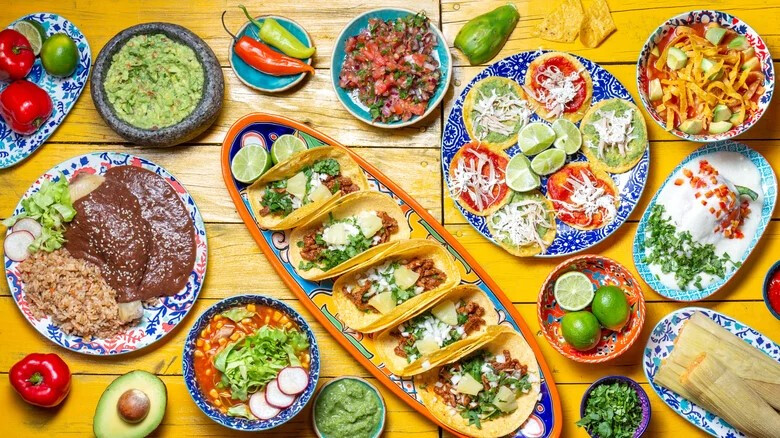
Mexican gastronomy stands as a testament to the country's rich cultural tapestry, celebrated globally for its diversity, vibrant flavors, and deep historical roots. Recognized by UNESCO as an Intangible Cultural Heritage of Humanity in 2010, Mexican cuisine is distinguished by its use of indigenous ingredients, including corn, beans, chilies, tomatoes, and a plethora of aromatic herbs.
A Symphony of Flavors
Iconic dishes such as tacos, tamales, mole, pozole, and enchiladas have transcended borders, becoming symbols of national identity. Each region of Mexico contributes its unique culinary signature, reflecting indigenous, colonial, and contemporary influences. For example, Oaxaca is renowned for its complex moles and tlayudas, while the Yucatán Peninsula boasts delicacies like cochinita pibil and panuchos.
The Acclaimed Enchiladas Suizas
Among the many culinary treasures of Mexico, enchiladas hold a special place. Taste Atlas, a global gastronomic encyclopedia, has bestowed high praise upon Mexican cuisine, particularly highlighting the "Enchiladas Suizas." This dish, consisting of enchiladas covered in a milk or cream-based sauce, received a rating of 4.4 out of 5 stars, surpassing other varieties like enchiladas verdes and potosinas.
Taste Atlas describes the dish as follows: "Enchilada suiza is a popular Mexican dish consisting of enchiladas covered with a milk or cream-based sauce. It was first prepared in a restaurant called Sanborns in Mexico City. The name of the dish can be translated as Swiss enchiladas because Swiss immigrants introduced dairy sauces into Mexican cuisine."
A Diverse Enchilada Landscape
Beyond the esteemed Enchiladas Suizas, Mexico offers a diverse range of enchiladas, each with its distinctive flavor and preparation:
Enchiladas Verdes: Prepared with a tomatillo, green chili, and cilantro-based sauce, these are popular throughout the country, often filled with chicken or cheese and topped with cream, fresh cheese, and onions.
Enchiladas Rojas: Bathed in a sauce made from dried chilies like guajillo, pasilla, or ancho, these are common in various regions. Fillings typically include chicken or beef, with a variation in the north that includes frying the tortillas for a crispy texture.
Enchiladas Placeras: Originating from Michoacán, these enchiladas are filled with fresh cheese, potatoes, or carrots and served with chicken, cecina, or carne asada, accompanied by lettuce, cream, and cheese.
Enchiladas Potosinas: From San Luis Potosí, these enchiladas are made with masa mixed with chili, giving the tortillas a reddish hue, and are filled with cheese and chili.
Enchiladas Mineras: From Guanajuato, this traditional meal consists of fried tortillas filled with cheese or chicken, bathed in sauce and accompanied by carrots, potatoes and lettuce.
This rich tapestry of enchilada variations exemplifies the creativity and abundance of Mexican culinary traditions.
Mexican Culinary Heritage
Mexican cuisine is a complex and ancient cuisine, with techniques and skills developed over thousands of years of history. It is created mostly with ingredients native to Mexico, as well as those brought over by the Spanish conquistadors, 1 with some new influences since then. 2 Traditional Mexican cuisine is a comprehensive cultural model comprising farming, ritual practices, age-old skills, culinary techniques 3 and ancestral community customs and manners. It is made possible by collective participation in the entire traditional food chain: from planting and harvesting to cooking and eating. 4
[Copyright (c) Global Economic Times. All Rights Reserved.]






























